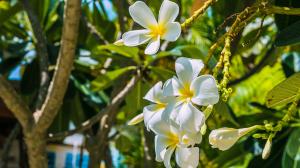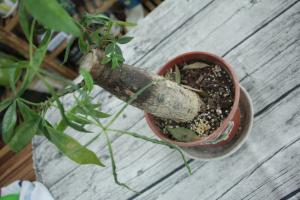How Close to Plant Cedar Trees?
Cedar trees are a popular choice for landscaping due to their attractive appearance and hardy nature. However, when planting cedar trees, it is important to consider the distance between each tree to ensure healthy growth and prevent overcrowding. In this article, we will discuss the ideal spacing for planting cedar trees and the factors that can influence this distance.
Factors Affecting Cedar Tree Spacing
The recommended spacing for cedar trees can vary depending on a number of factors including the species of cedar, the location of planting, and the desired outcome. For example, if you are planting cedar trees as a privacy screen or windbreak, you may want to space the trees closer together than if you are planting them for ornamental purposes. The following factors can also affect cedar tree spacing:
Soil conditions: Cedar trees prefer well-draining soil and may need to be spaced further apart if the soil is poor or compacted.
Climate: Cedar trees can be sensitive to extreme temperatures and may require additional spacing in areas with harsh winters or hot summers.
Available space: The size of your planting area and the number of trees you want to plant will also impact spacing. If you have a large area to plant, you may be able to space your trees further apart.
Ideal Cedar Tree Spacing
The ideal spacing for cedar trees can vary based on the factors listed above. However, as a general guideline, most species of cedar should be spaced at least 10-12 feet apart. This will give the trees enough space to grow into their mature size without becoming crowded or stunted. If you are planting cedar trees for privacy or windbreak purposes, you may want to space them closer together at around 6-8 feet apart. However, you should still ensure that each tree has enough space to grow without competing with its neighbor.
Additional Tips for Planting Cedar Trees
When planting cedar trees, it is important to follow a few key tips to ensure healthy growth and longevity. Some additional tips to keep in mind include:
Choose the right species: There are many species of cedar available, each with unique characteristics and growing requirements. Make sure to choose a species that is well-suited to your climate and soil conditions.
Plant at the right time: Cedar trees should be planted in the fall or early spring to give them enough time to establish roots before the hotter months of summer.
Provide adequate water: Cedar trees require consistent moisture in order to thrive. Make sure to water your trees regularly during the first few years after planting.
Fertilize as needed: Cedar trees do not typically require fertilization, but if you notice slow growth or yellowing leaves, you may need to supplement with a nutrient-rich fertilizer.
Conclusion
Planting cedar trees can be a great addition to any landscape, but it is important to consider the spacing between each tree to ensure healthy growth and prevent overcrowding. By following the guidelines outlined in this article and providing your trees with adequate care, you can enjoy the beauty of cedar trees for years to come.

 how many times do yo...
how many times do yo... how many planted tre...
how many planted tre... how many pine trees ...
how many pine trees ... how many pecan trees...
how many pecan trees... how many plants comp...
how many plants comp... how many plants can ...
how many plants can ... how many plants and ...
how many plants and ... how many pepper plan...
how many pepper plan...






























